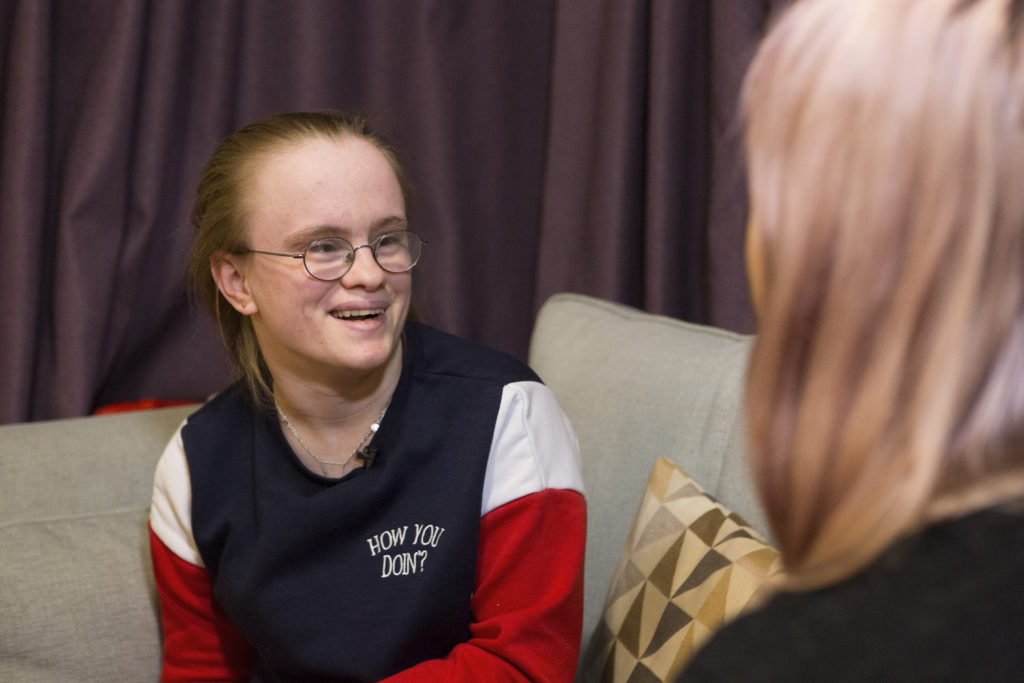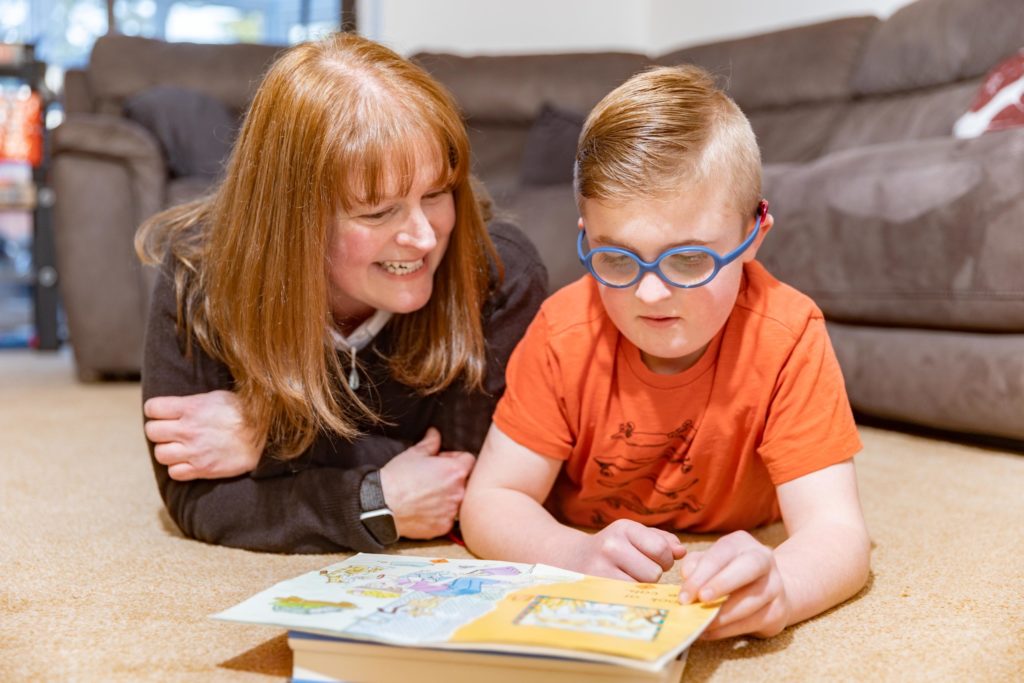Clear speech
This page explains the value of clear speech for anyone with hearing loss.
Why is clear speech important?

How Sense can help
We offer free and impartial information about living with complex disabilities, including deafblindness.
Get in touch by phone, email, post or through a BSL interpreter.
Clear speech is a way of speaking that means every word, sentence and idea is spoken clearly and simply.
Who uses it?
Clear speech is especially important for people with hearing loss – and helps avoid misunderstandings.
But it helps everyone. It’s easy to mumble or talk without looking at the person you’re speaking to. This can make it harder to understand what you’re saying.
While listening to someone speak, some people may also use lipreading to help them follow conversations more clearly. This means it’s important others face the person when talking to them.
Before you read on…
- You can communicate using a mix of different ways (we all do!).
- At Sense, we use whatever combination of speech, touch, sign or visual language works best.
- It’s never too late to start.
- Have a go and don’t worry about getting it wrong.
How can I start to learn clear speech?
- Say each word clearly and accurately.
- Pause between phrases and thoughts. This gives the listener time to process what you’ve said before you continue.
- Slow down – not to the point of sounding like a robot, but don’t rush your words when speaking.
- Increase volume a little – but there’s no need to shout.
- Relax and exercise your jaw – a simple exercise is to open your mouth wide and shut it again a few times.
- Keep practising – practise with a friend or someone in your family who can tell you how you’re doing.
Top tips
If you have a hearing loss:
- Tell the person you’re speaking with that you have a hearing loss.
- Let people know they need to get your attention before talking to you.
- Tell them if you are wearing a hearing aid.
- Find somewhere to speak away from too much background noise and with good lighting – not too dim and not too glaring.
- Stand or sit where you can best see the person’s lips, facial expressions and gestures.
- If your hearing is better in one ear, turn that side towards the person you’re speaking with.
- It’s OK to ask someone to repeat what they said, or to say it differently, if you didn’t catch it first time.
- Try not to get anxious – that will probably just make it harder to follow what’s being said.
- Remember – no one hears correctly all the time, so relax and enjoy the conversation.
If you’re speaking to a person with hearing loss:
- Face the person you’re talking with.
- Make sure you have the person’s attention before you speak.
- Say “hello” directly to the person with hearing loss, not through someone who’s with them, even if it’s their support worker or an interpreter.
- Ask the person if they’re wearing a hearing aid.
- If the person is wearing a hearing aid, ask if they also need to lipread you.
- Make sure the person can see your face – don’t smoke, eat or cover your mouth with your hand.
- Speak clearly and talk a little slower, but not too slowly.
- Don’t shout – this is uncomfortable for hearing aid users and can look aggressive.
- Use gestures and facial expressions to support what you say.
- It’s OK to ask the person if they understand what you’re saying. If they don’t, try saying it in a different way.
- Use plain language, be direct and get to the point.
- If you’re talking with a person with hearing loss and one without, remember to pay attention to both of them.
Say hello to Angel
Watch Angel in conversation with Katie from Sense.
Audio description version of Say Hello to Angel with transcript.
Stay in touch

Get updates about our vital work, including volunteering, making a donation or supporting Sense campaigns.
Types of communication
These are the main ways of communicating that we use:
-

Using touch
- Braille uses raised dots to touch.
- Deafblind Manual spells words on to your hand.
- Block alphabet spells letters on to your hand.
- Moon uses raised lines, curves and dots to touch.
- Tadoma uses lipreading by touch.
- Hand-under-hand signing using touch.
-

Using signs
- Sign language.
- Makaton, a simpler version of sign language.
- Visual frame signing for people with reduced vision.
- Objects of reference.
-

Using speech
-

Also
- Non-formal communication without speaking, writing or signing.
- Intensive interaction treating everything as communication.
This content was last reviewed in April 2023. We’ll review it again in 2025.
